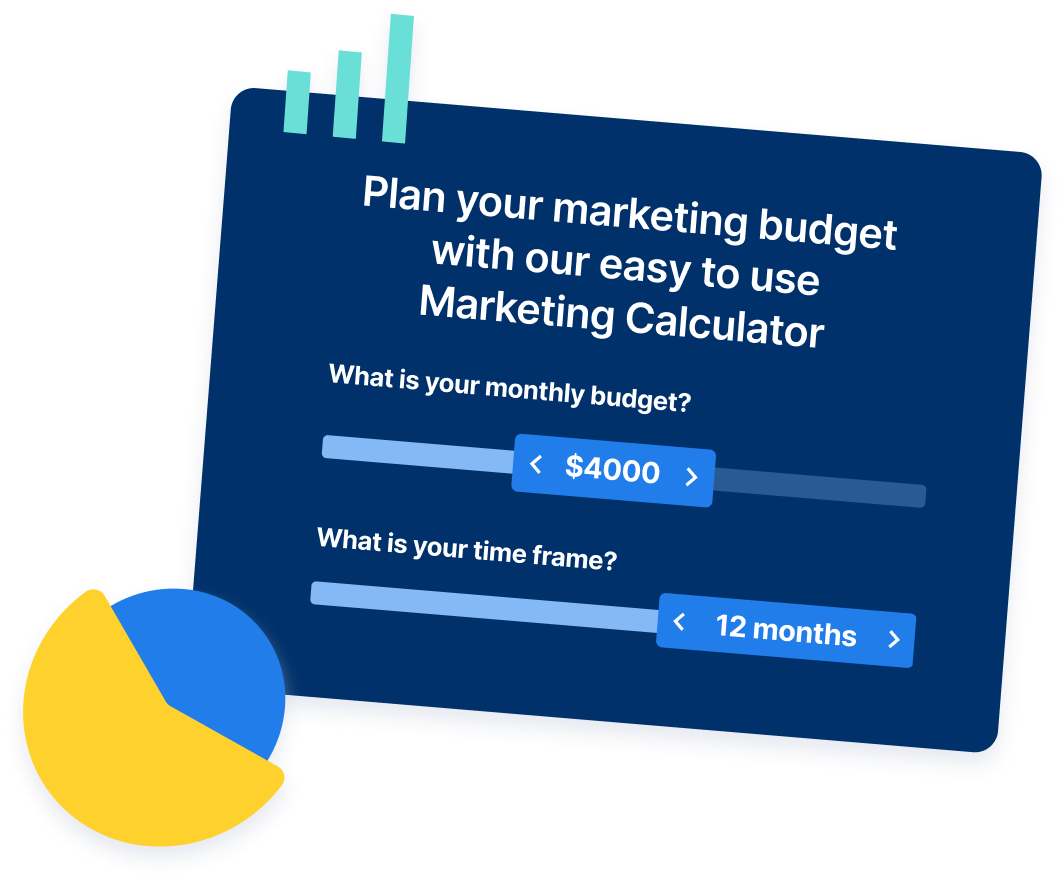-
 7 min. read
7 min. read
-
 Macy Storm
Macy Storm Content Marketing Consultant
Content Marketing Consultant
- Macy is a content marketing consultant with over five years of experience creating content for dozens of industries including home services, recreation, and education. She’s written about every marketing topic under the sun, from SEO to AI to email marketing. Her work has been featured by Search Engine Journal, HubSpot, Entrepreneur, Clutch, and more. In her free time, Macy enjoys crafting, reading comic books, and walking her dog Daisy.
As you’ve started to look into creating your digital marketing campaign, you’ve come across many marketing acronyms. One of the most common is the SEO acronym.
In business, what does the SEO acronym stand for?
The acronym SEO stands for search engine optimization. It is a marketing abbreviation that refers to what is, for many businesses, one of the most lucrative channels of digital marketing.
So, what does this mean, and how can you start using it?
In this post, we’ll discuss the meaning behind the SEO acronym, how to optimize your site for SEO, and cover other common terms related to SEO.
Let’s get started!
SEO acronym: What does it mean?
As we stated previously, SEO is an acronym and abbreviation for search engine optimization. If you’ve never heard of SEO, you may not understand what this means.
So, what is SEO?
SEO is the process of improving your website’s ranking in the search results. You want to get your site to rank on search engines like Google and Bing.
This is the “search engine” part of the SEO acronym.
Search engines are extremely popular among users. In fact, 93 percent of all online experiences start with a search engine. When people start their online session, the majority of them are typing a search query on Google or Bing.
These search engines are extremely valuable to your audience.
They use these engines to answer questions, find products and services, and more. Google and Bing catalog, index, sort, and arrange all web pages on the Internet to deliver the best search experience for users.
Users rely on the Internet to obtain valuable information. They rely on search engines to provide trustworthy and relevant search results.
This is how people will find your website online.
A key part of SEO is improving your website’s content and performance, like its speed, to help you increase your ranking and reach more people in your target market. This is the “optimization” part of the SEO acronym.
Google’s and Bing’s algorithms are constantly changing and improving to provide users with more relevant search results. You must optimize your website to ensure that you keep appearing in relevant results.
This is the best way to help shoppers find your content.
The “optimization” portion of the SEO acronym is extremely crucial to your business’s success. If you don’t optimize your pages, you won’t appear in the search results. You must constantly optimize your page to continue to rank in the results.
SEO acronym in business: How to optimize your site for SEO
As stated previously, the optimization or “O” part of SEO is essential to your company’s online success.
If you want people to find your business, you must start optimizing your presence in the search engine result pages (SERPs).
So, how can you optimize for SEO?
1. Integrate keywords
Keyword optimization is a crucial part of ranking in search results. Search engines operate on keywords, so it’s important that you use these key phrases on your pages.
To find the right keywords, conduct keyword research. Keyword research will help you generate a list of potential keywords that will help drive leads to your business.
When you conduct keyword research, you’ll want to focus on long-tail keywords.
These are keywords that contain three or more words. An example of a long-tail keyword is “flower shops near Harrisburg, PA.”
These keywords drive better results for your business because they attract more qualified leads. If someone searched,“flower,” you wouldn’t know the search intent behind that query.
They could be looking for different types of flowers, like the meaning of the word flower or the local flower shop down the street.
With a keyword like “flower shops near Harrisburg, PA,” you know exactly what your audience hopes to find.
This helps you connect with relevant leads looking for your business, products, or services.
2. Page speed optimization
Another part of “optimization” in the SEO acronym meaning relates to page speed optimization. Users hate to wait for slow-loading pages. If your page takes too long to load, your audience will become discouraged and leave your site.
Leaving your page increases your bounce rate.
If a page features a high bounce rate, it sends a signal to Google that your site isn’t relevant to the search results and isn’t user-friendly. Google will reduce your ranking to allow better, more relevant sites to reach the top of the SERPs.
To prevent this from happening, you must optimize your page speed. Having fast-loading pages will help you perform better in search results.
More people will remain on your page because your information will load quicker.
There are numerous factors that contribute to your site’s load time. Reducing image file size and cleaning up code can vastly improve your load time. When you improve your site’s performance, you keep visitors happy and on your site.
3. Content optimization
Another part of the optimization process is content optimization. Content is a crucial part of SEO. It’s the most effective way to drive traffic to your website.
When you create content, you share information your audience seeks.
Users are constantly conducting searches to find relevant information to help them learn. When you provide them with valuable information, you present yourself as knowledgeable and authoritative.
There’s a variety of content you can create to engage your audience. You can create blogs, videos, infographics, ebooks, and more.
These are all great mediums to share content with your audience.
The important optimization part of the content is matching user search intent. When users conduct searches, they want to find information that is relevant to their search query. Optimizing your content for user search intent helps your content appear in relevant search results.
Optimizing content will help your pages perform better in the search results.
You’ll provide your audience with relevant information to their search query. It will help you improve your SEO ranking too.
Additional SEO-related acronyms you’ll encounter
The SEO acronym isn’t the only acronym you’ll encounter as you learn more about SEO. Here are a few acronyms you’ll want to get familiar with as you embark on your journey to start using SEO.
- PPC (Pay-Per-Click): PPC is an acronym you’ll frequently see, as PPC and SEO are often used hand-in-hand. PPC is a paid form of advertising, where the ads appear at the top of the search results above organic listings. Many companies use PPC in conjunction with SEO to help learn more about their audiences and discover relevant keywords.
- ROI (Return on Investment): Your ROI is the money you make in profit after you’ve spent money. You have to spend money to make money in return. This metric is how much money you make back after you invest in SEO.
Remember, though, SEO can take months to deliver results.
- KPI (Key Performance Indicators): KPIs are measurable values that demonstrate how effectively your business achieves its objectives. Companies often use KPIs to see if they are meeting goals with their campaigns.
- CMS (Content Management System): CMS is a system that allows you to edit, publish, and modify your content. You’ll commonly see this acronym when you’re creating and managing your content.
- CRO (Conversion Rate Optimization): CRO focuses on the process of making changes to your ads, marketing materials, and website to turn more viewers and visitors into conversions for your business.
- SERP (Search Engine Results Page): This is one of the most common phrases you’ll see when using SEO. The SERPs are the pages of results with links to different website pages. You’ll monitor these results to see where your pages end up ranking.
These are just a few terms, aside from the SEO acronym, that you will see with SEO.
-
 Macy is a content marketing consultant with over five years of experience creating content for dozens of industries including home services, recreation, and education. She’s written about every marketing topic under the sun, from SEO to AI to email marketing. Her work has been featured by Search Engine Journal, HubSpot, Entrepreneur, Clutch, and more. In her free time, Macy enjoys crafting, reading comic books, and walking her dog Daisy.
Macy is a content marketing consultant with over five years of experience creating content for dozens of industries including home services, recreation, and education. She’s written about every marketing topic under the sun, from SEO to AI to email marketing. Her work has been featured by Search Engine Journal, HubSpot, Entrepreneur, Clutch, and more. In her free time, Macy enjoys crafting, reading comic books, and walking her dog Daisy. -

WebFX is a full-service marketing agency with 1,100+ client reviews and a 4.9-star rating on Clutch! Find out how our expert team and revenue-accelerating tech can drive results for you! Learn more
Try our free Marketing Calculator
Craft a tailored online marketing strategy! Utilize our free Internet marketing calculator for a custom plan based on your location, reach, timeframe, and budget.
Plan Your Marketing Budget

SEO Success with KOA

Proven Marketing Strategies
Try our free Marketing Calculator
Craft a tailored online marketing strategy! Utilize our free Internet marketing calculator for a custom plan based on your location, reach, timeframe, and budget.
Plan Your Marketing Budget
What to read next





